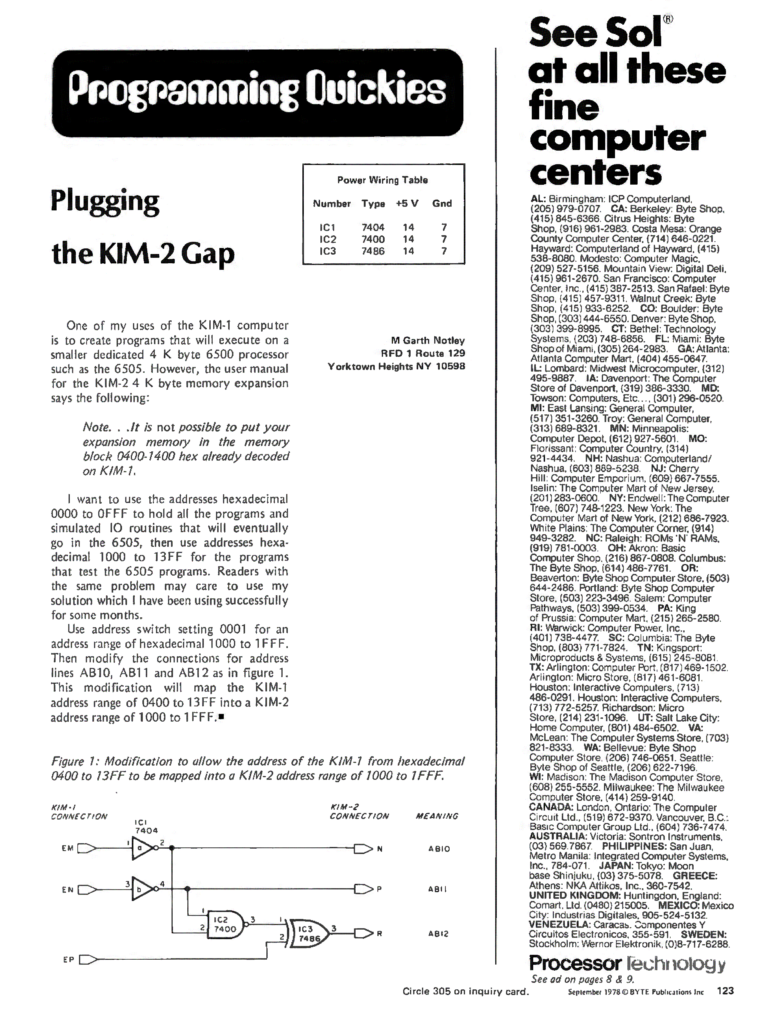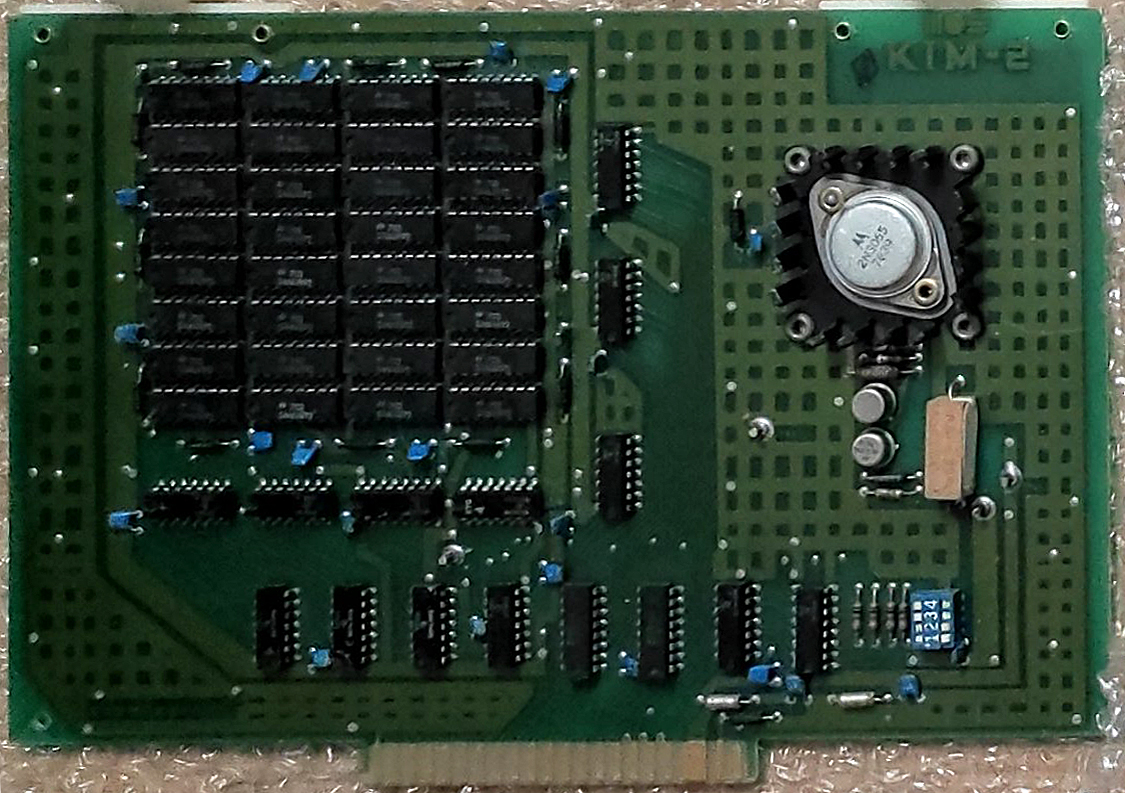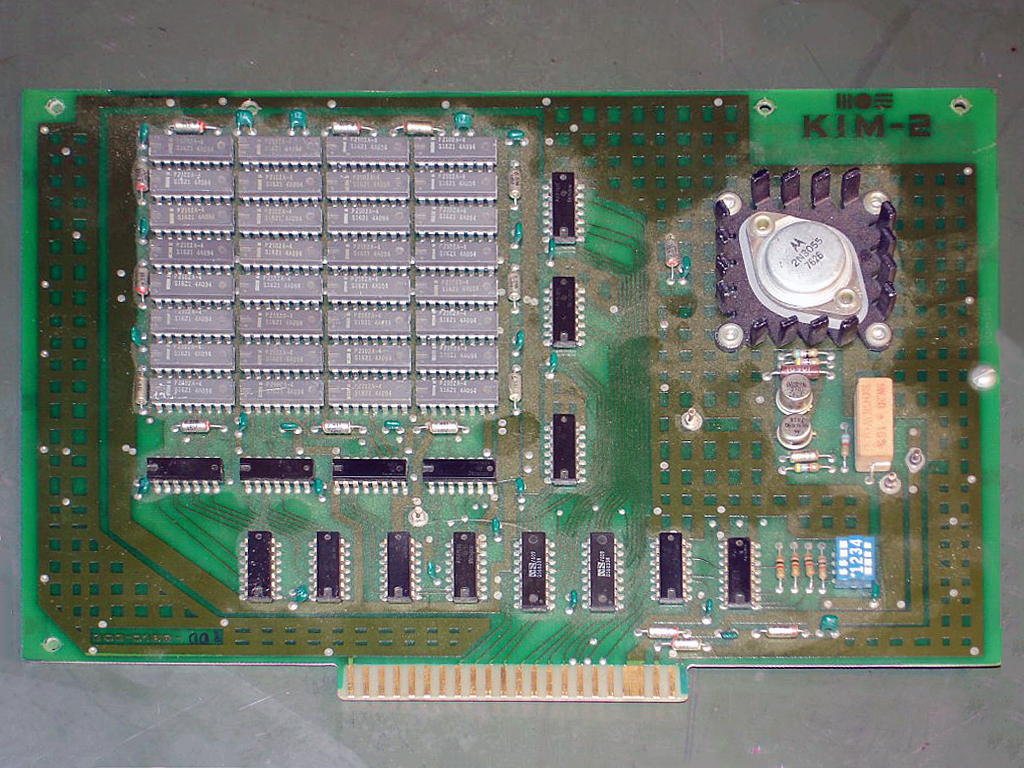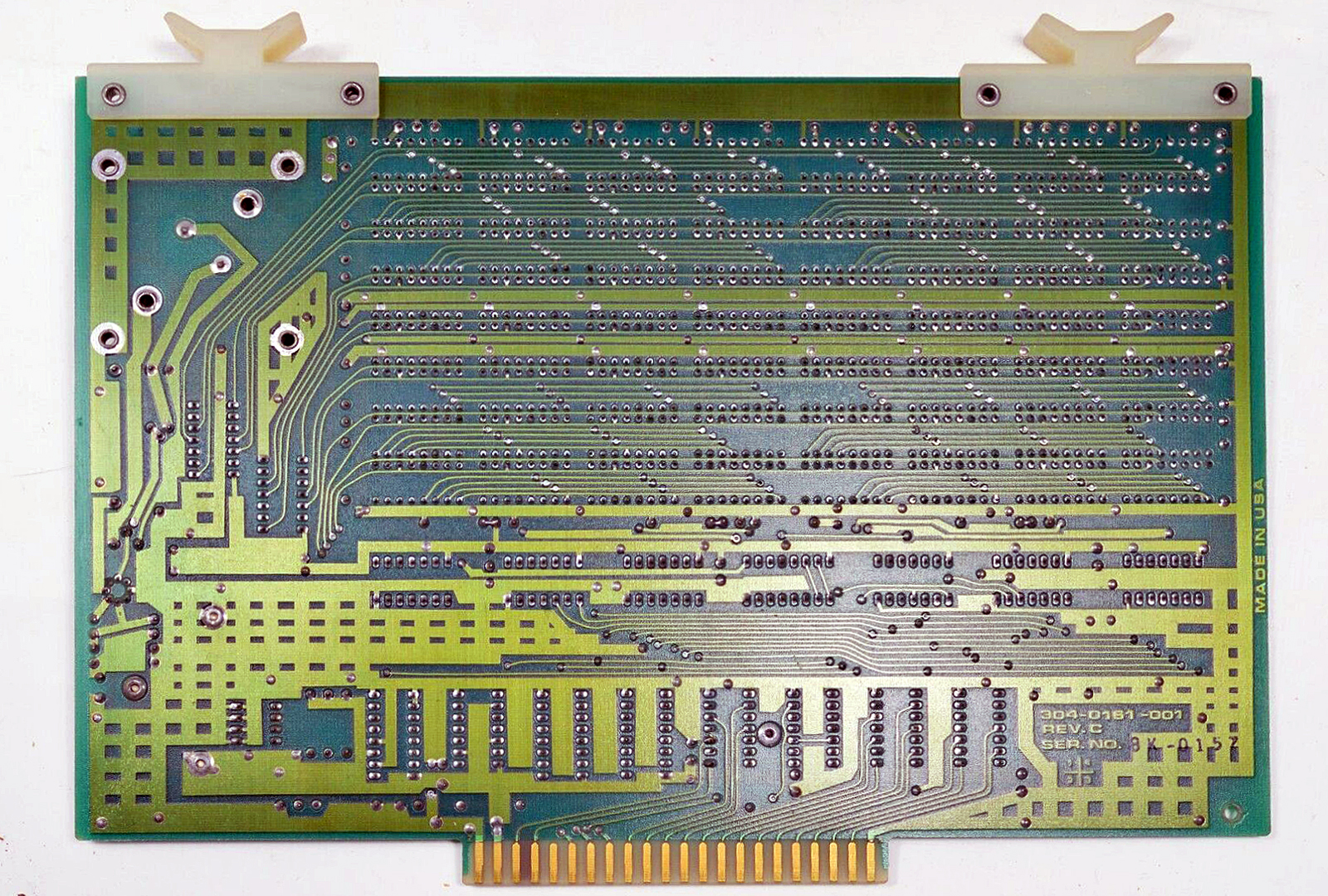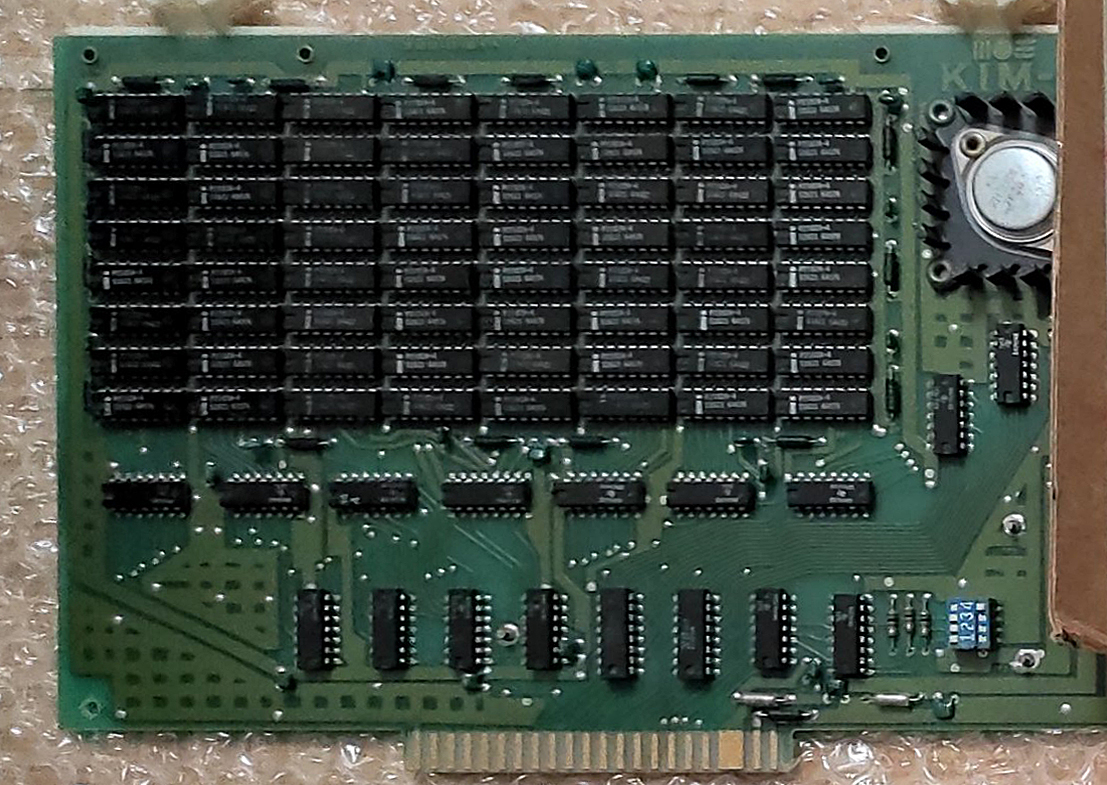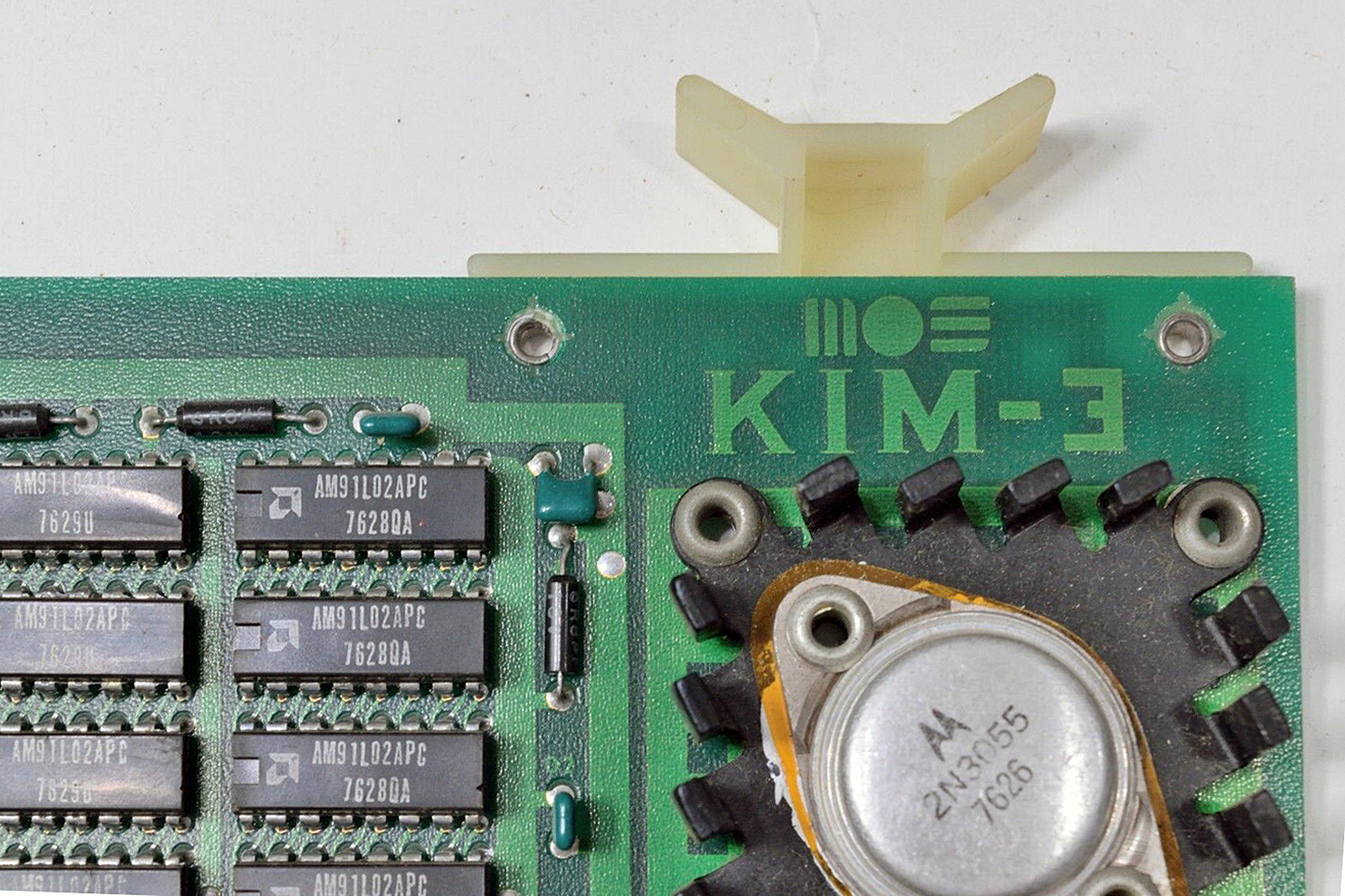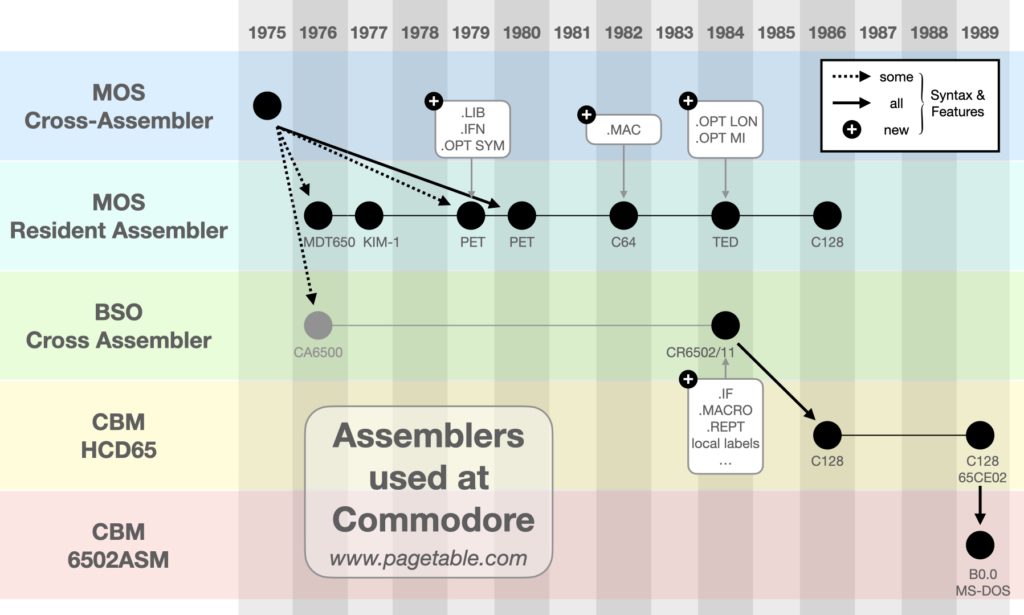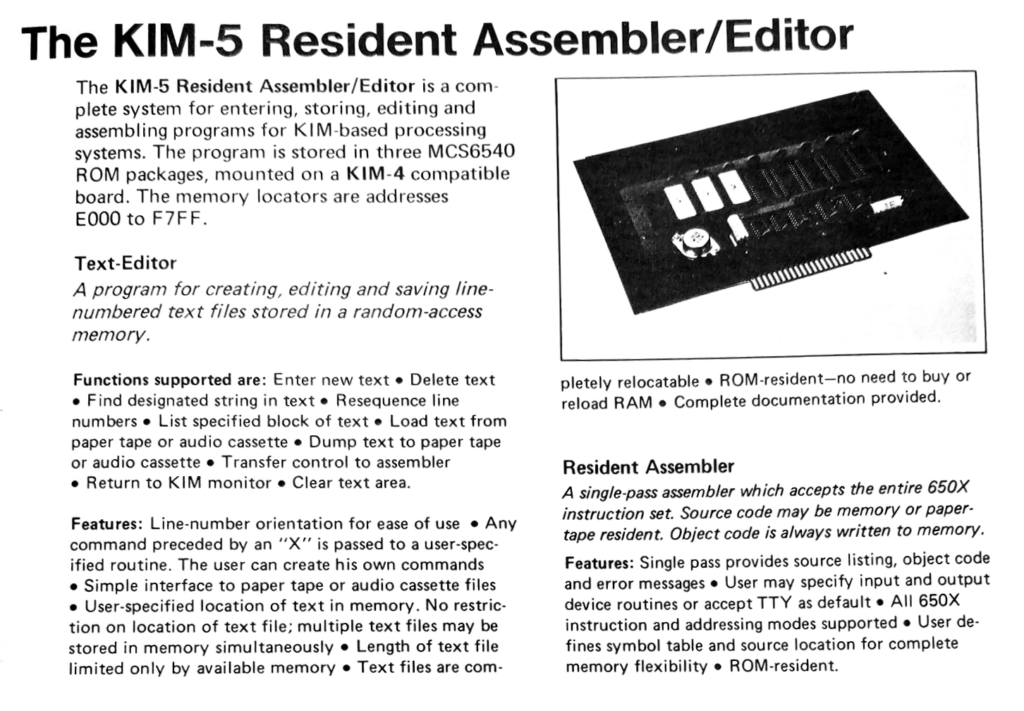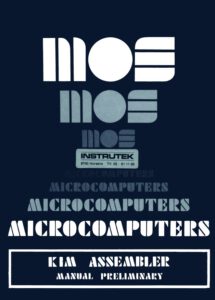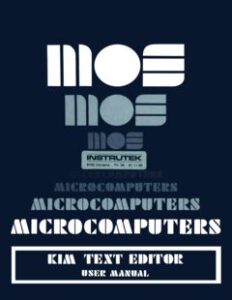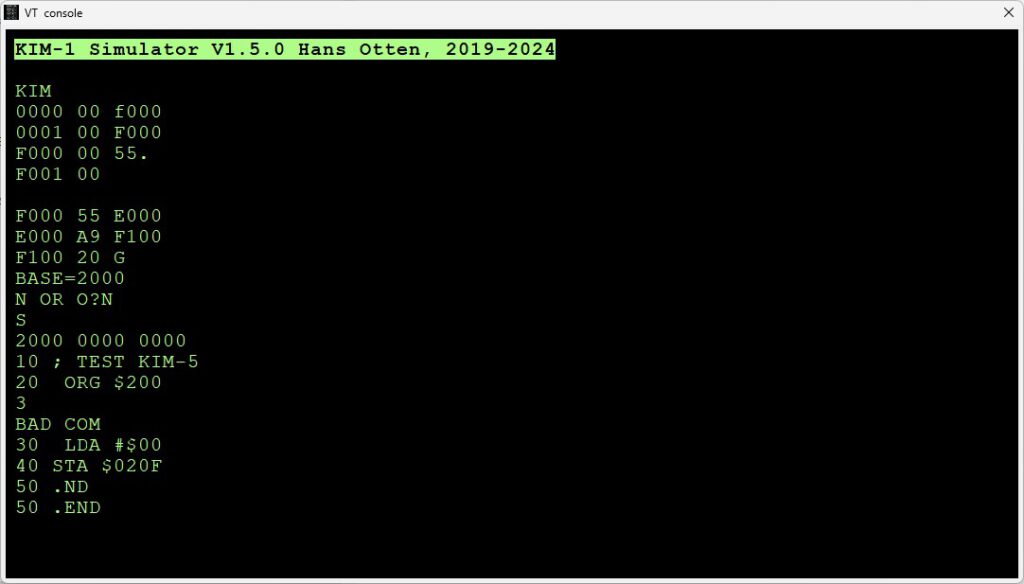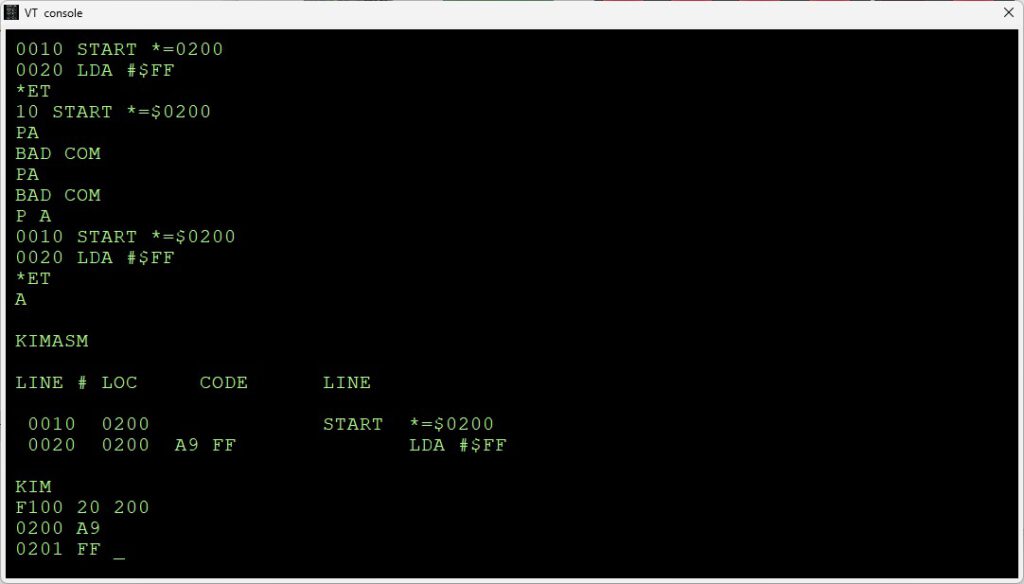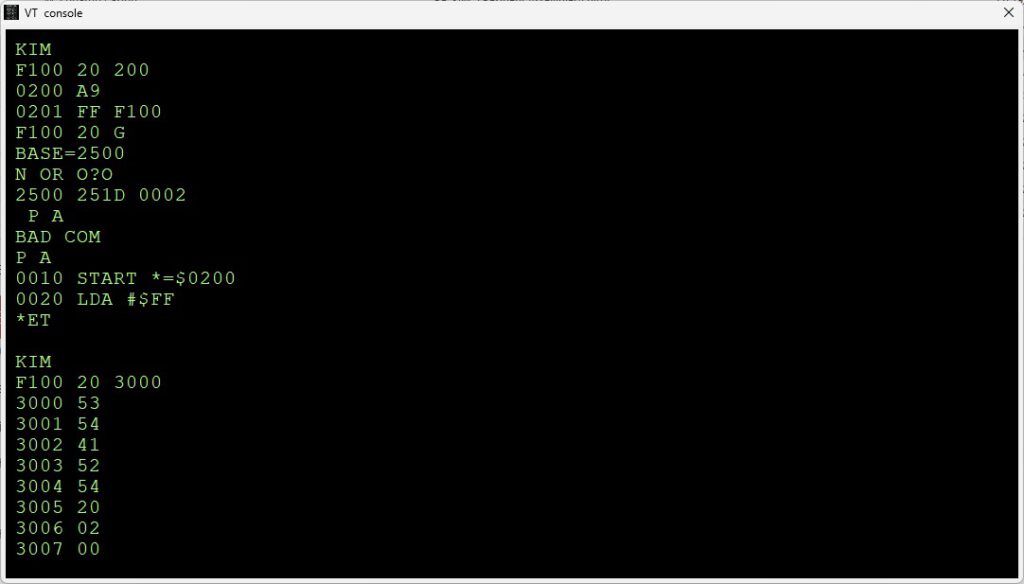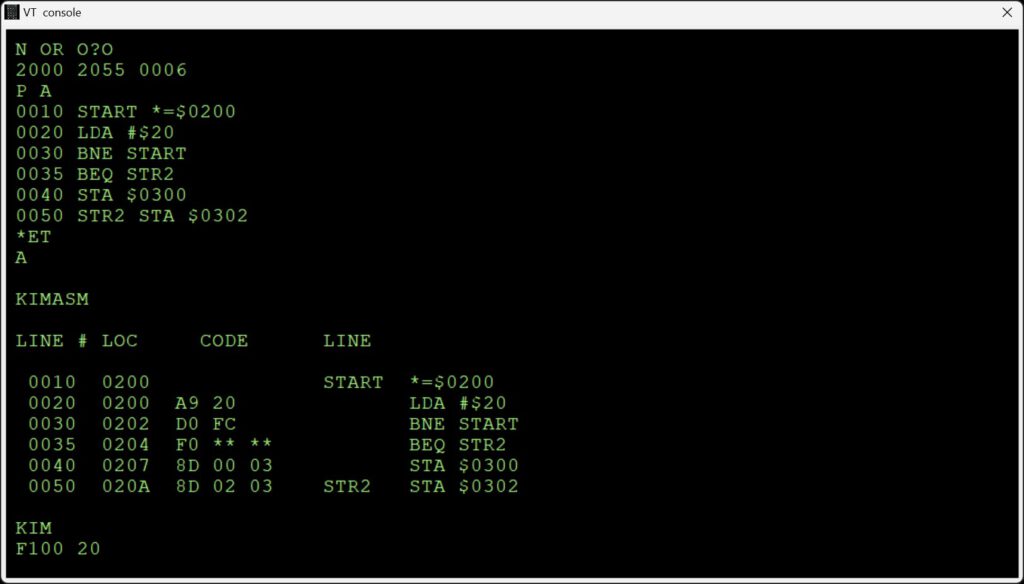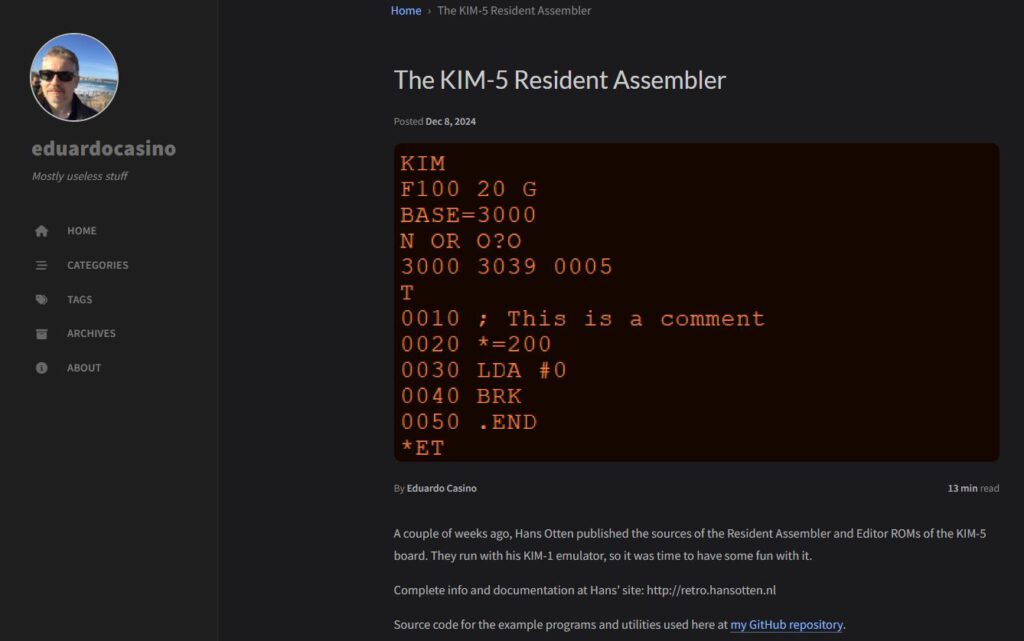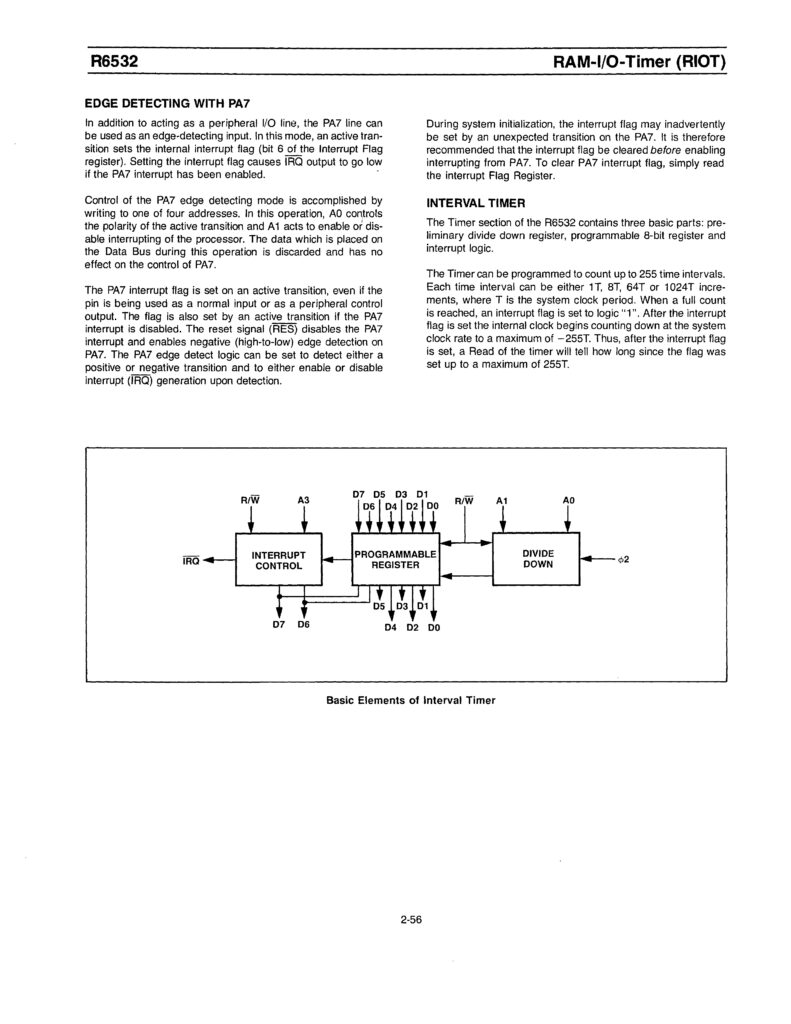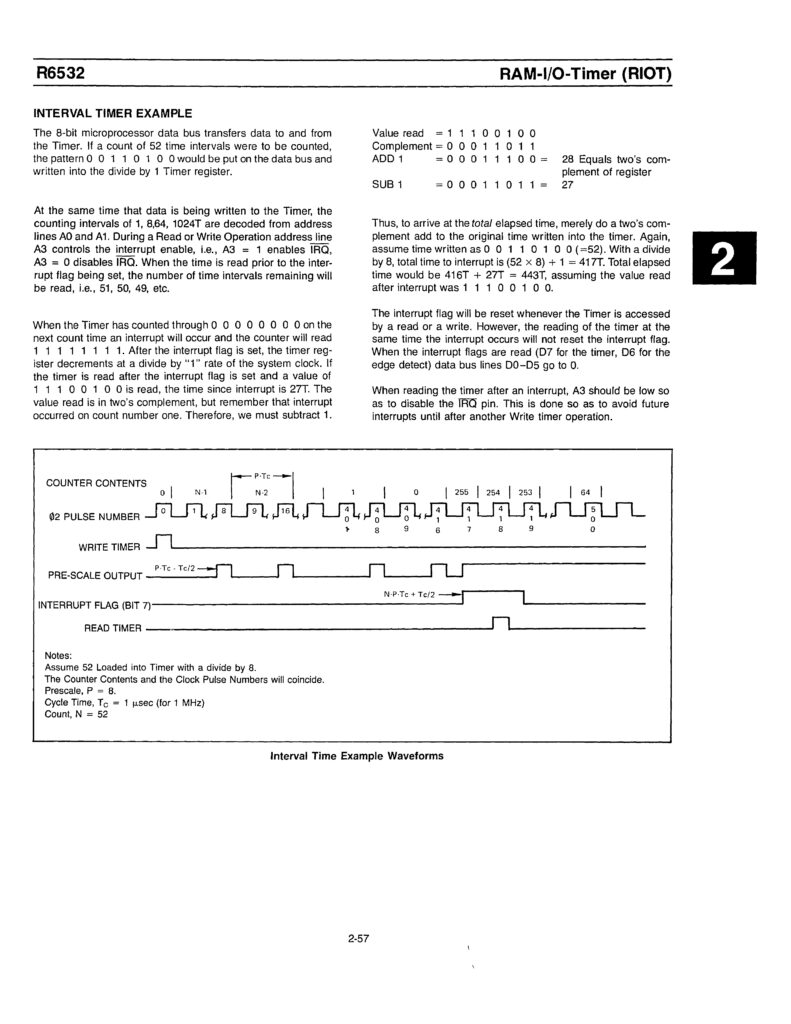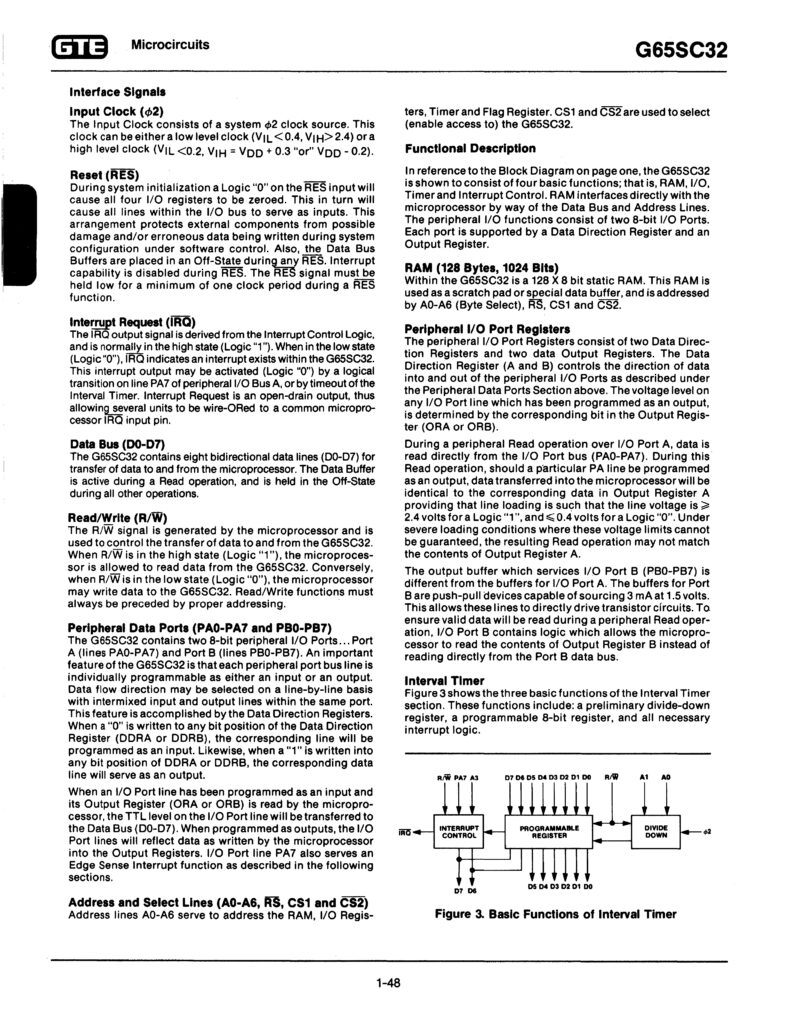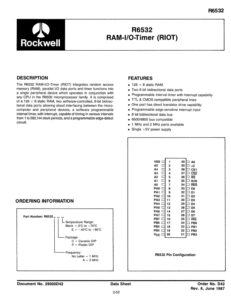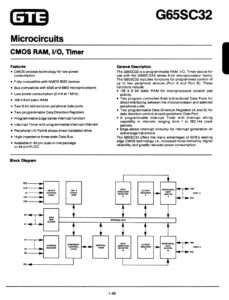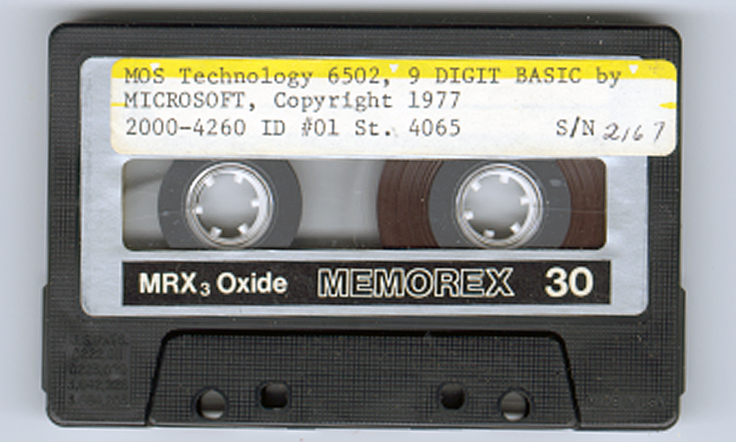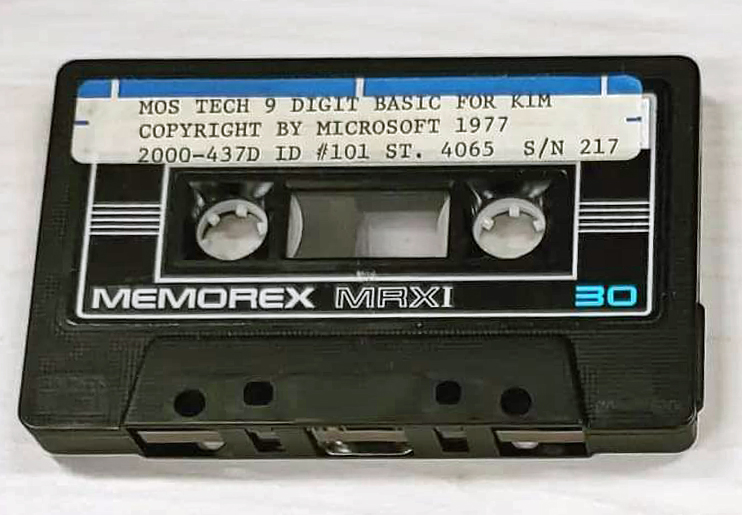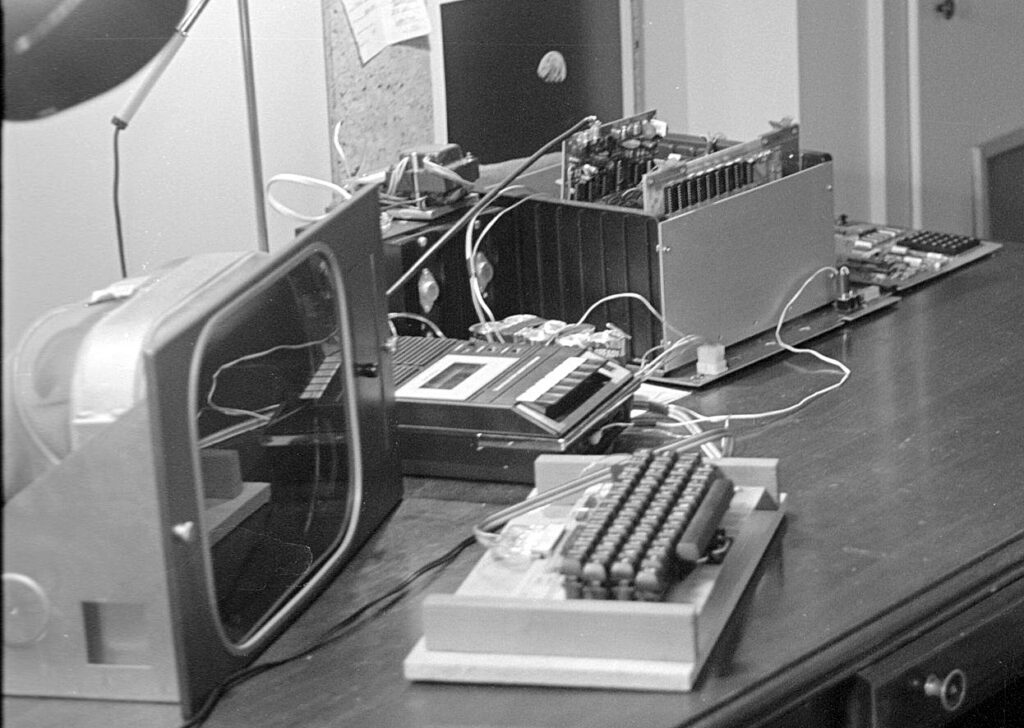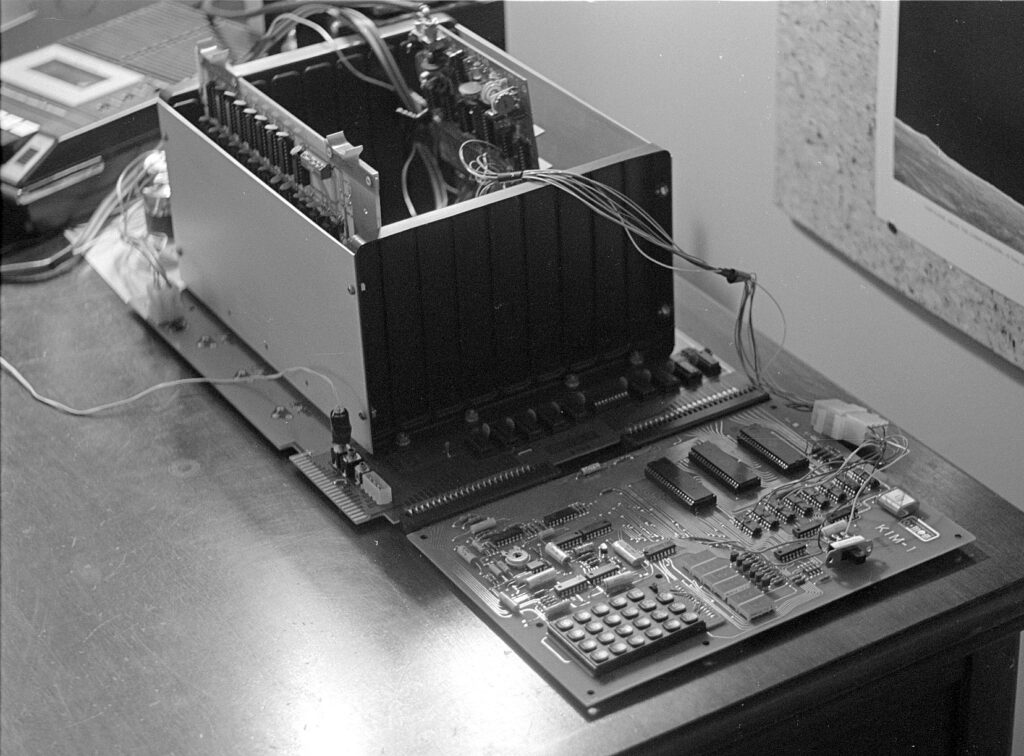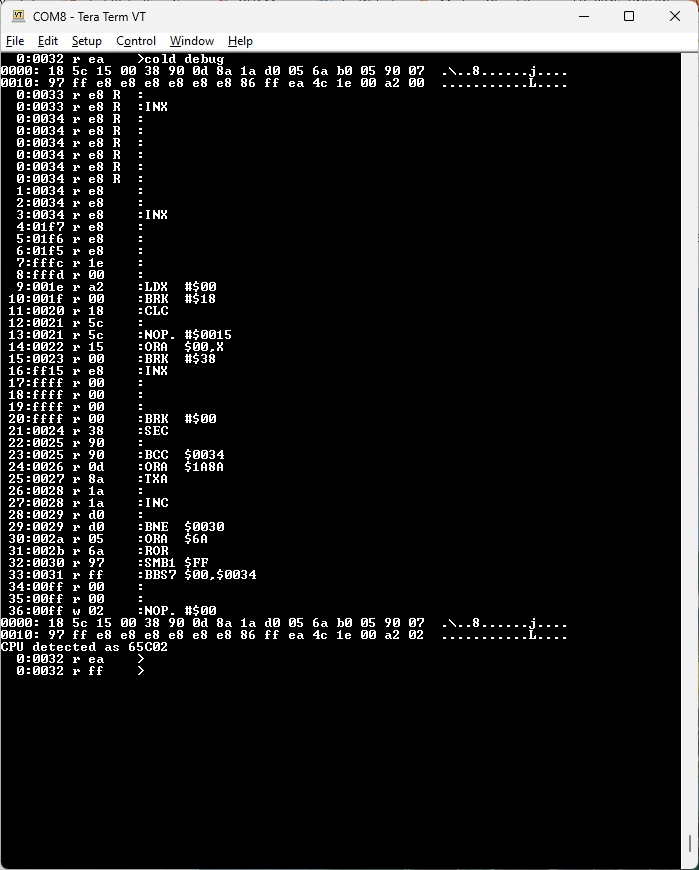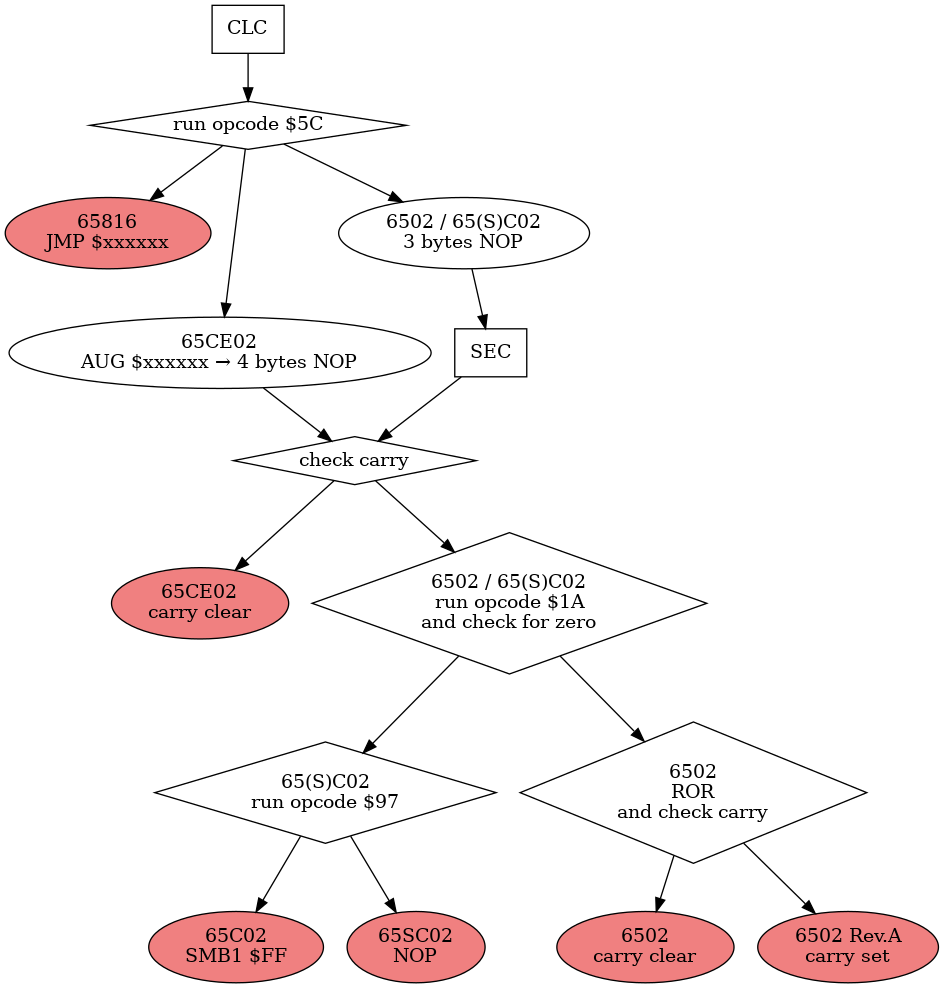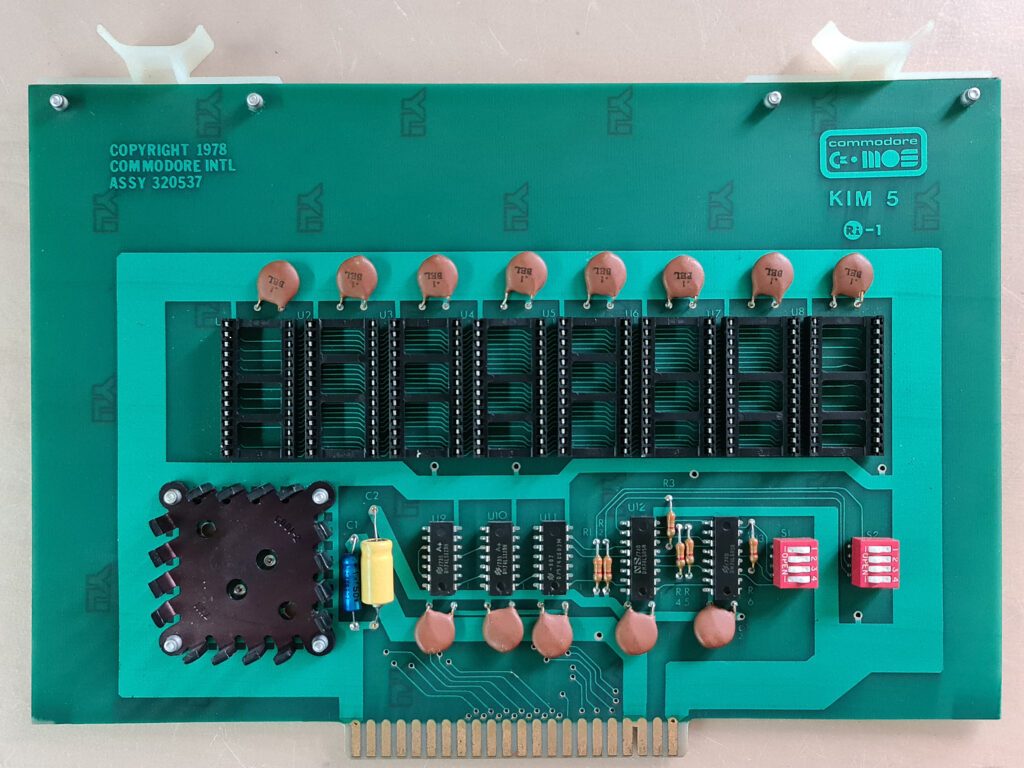
The KIM-5 ROM board can hold 8 6540 mask programmable ROMs.
Known are the 3x 6540 Resident Assembler/Editor ($200) and 1x 6540 KIMath (50$)
On this page:
Where is KIM Going?
Richard Simpson, KIM Forum, Kilobaud 1977
One of the questions most frequently asked me was “what are the future plans for KIM?” Most KIM owners are aware that MOS offers a KIM-2 4K RAM expansion board and a KIM-3 8K RAM expansion board. Either of these can be attached directly to a KIM-1. To expand further, a motherboard (KIM-4) must be added and MOS has planned a KIM-5 ROM expansion board, which will hold up to eight MCS6504 (2K by 8) mask-programmed ROMs (the ROMs are not provided with the KIM-5 but must be purchased separately). At present, there are two sets of software which are planned for release in ROMs – KIMath and a resident assembler/editor.
KIMath
KIMath will occupy a single ROM and consists of a set of subroutines for doing floating-point arithmetic. All calculations are done in BCD to avoid the round-off errors which are inherent in binary floatingpoint routines. The subroutine user can specify the precision (in decimal digits) of any calculation. The more precision specified, of course, the longer the computation time. The package will handle a maximum of sixteen decimal digits of precision plus a two digit exponent so numbers in the range of ±1 times 10E±98 can be handled. The subroutines occupy memory locations F800-FFF8 and were written so they could be used with any 650Xbased system – not just KIM. The subroutines include code for addition, subtraction, multiplication, division, square roots, logs, exponents, tangents and arctangents. All the other trig functions can be generated through the use of trigonometric identities. A subroutine is also provided for evaluating user-specified polynomials, so any continuous function can be approximated.The KIMath ROM should be available by the time you read this. If you don’t want to pay $50 for the ROM, the Programming Manual for KIMath is available for $15 and it includes a complete listing of both source and object code. The manual also contains thirtyseven pages of information on using the subroutines, including a worked-out sample application. If you want to use the ROM but balk at paying $80 for the KIM-5 board to hold it, you’ll be happy to know that the 6540 ROM can be attached directly to the KIM address and data busses, although you’ll need a couple of extra ICs to send the right signal to the KIM-1 Decode Enable line. I’ll provide an interface schematic for this in a future issue of the KIM forum.
The Resident Assembler /Editor
To create any large-scale software on a microcomputer, an assembler is a necessity. Industrial microcomputer users can use the crossassemblers available on several commercial timesharing systems, but the expense of going this route is too much for any but the most affluent hobbyist. Thus, the introduction of the KIM resident assembler should facilitate user software generation and make a lot more software available. The assembler and text editor are available as a set of three MCS6540 ROMs – a total of 6K of code. The $150 which MOS charges for the set may seem exorbitant until you realize that you don’t have to buy 6K of RAM to store it in (which would cost as much or more) and you’ll never have to load it or have it clobbered by errant statements in the program you are developing. Like KIMath, the Assembler/ Editor will work on any 650X-based system. Since the program has to do terminal I/O, locations are reserved in memory page zero to contain the address of the terminal input and output routines. These locations are automatically initialized for KIM owners; users of other 6500 systems (JOLT, TIM, Apple, Baby!, OSI, etc.) can preset those locations with the addresses for the device service routines of their own system. The Editor/Assembler occupies the memory space from E000 to F7FF; thus the editor, assembler, and KIMath fit together in the top 8K of memory.The text editor is a standard line-numbered text editor; it provides much the same editing capability you would find in a BASIC system. You can enter or insert new lines, replace old lines, resequence the line numbers, dump the text file to audio cassette or paper tape, list out lines in the file, and locate lines in the file which contain any specified text string. There is also a special command (actually, any command which begins with an X) to allow you to jump to a user-written subroutine so that you can extend the editor’s capabilities to meet your own needs. Naturally, both the editor and assembler require that you have a terminal connected to the serial port on the KIM-1.The assembler is a singlepass assembler; if your source text is on paper tape or audio cassette, you only have to feed it through once. Normally your source text will be in memory and the assembled code is always written to memory. The source code, symbol table, and object code can be located anywhere in memory you wish. You may have several different source files in memory simultaneously. If you have insufficient memory space to store a large source program, you can break it into several segments, store each segment on audio tape, then bring back one segment at a time for assembly. The assembler will assemble the successive segments until it encounters an “END” statement. It will then put out the symbol table and terminate assembly. Although the editor is fairly limited (it has no capability to edit within a given line, for instance) it is quite sufficient for editing assembly language programs. The assembler is very fast and with good error diagnostics. Perhaps its only serious fault is that the printed symbol table is not sorted alphabetically and no crossreferences are given.
MOS 6540 ROM
The MOS Technology 6540 is a 16k (2KByte) ROM. Factory burned. Mask options for specification of chip select equations. 5! chip selects, requires Phi2 6502 system clock. 24 pin, very uncommon for a small ROM.
A strange and uncommon device, AFAIK only used in the KIM-5 Resident Assembler/Editor and early PET computers. Has a bad reputation, and there are many replacement solutions with standard E(E)PROMs for PET computers.
The 6540’s in the KIM-5 Resident Assembler/Editor on a KIM-5 ROM board are in an excellent condition, dumping with the Backbit Pro chip tester was very easy.
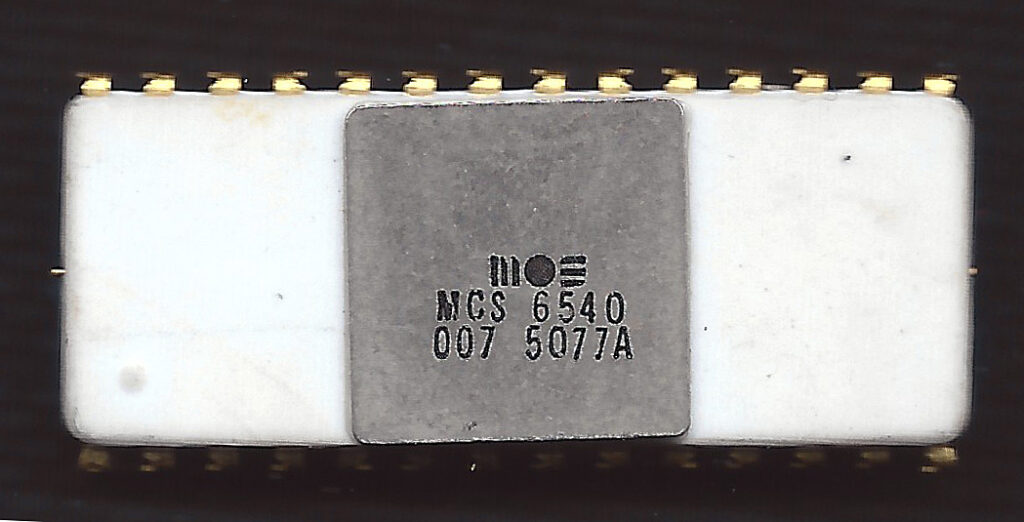
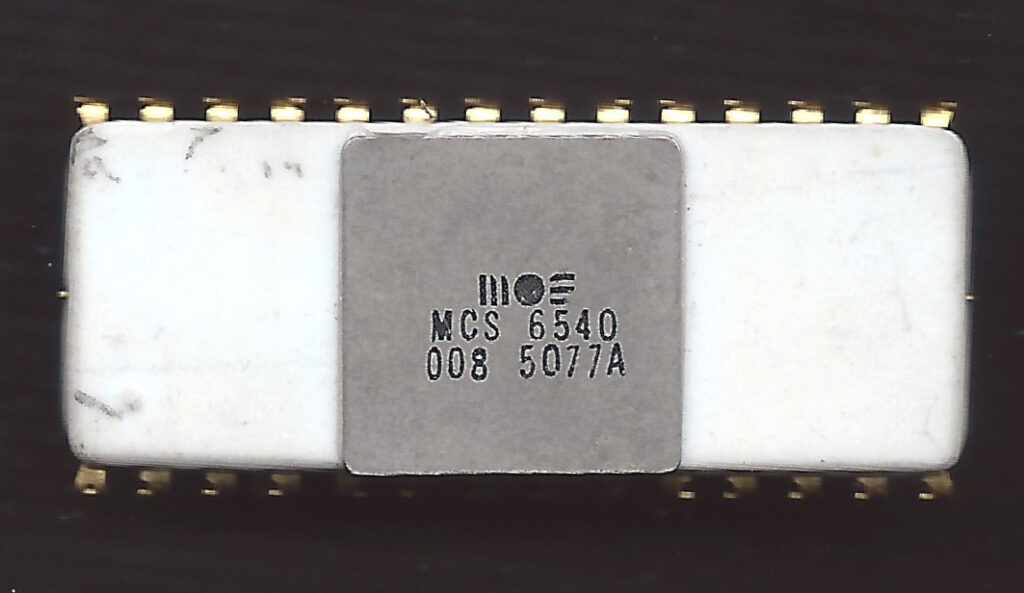
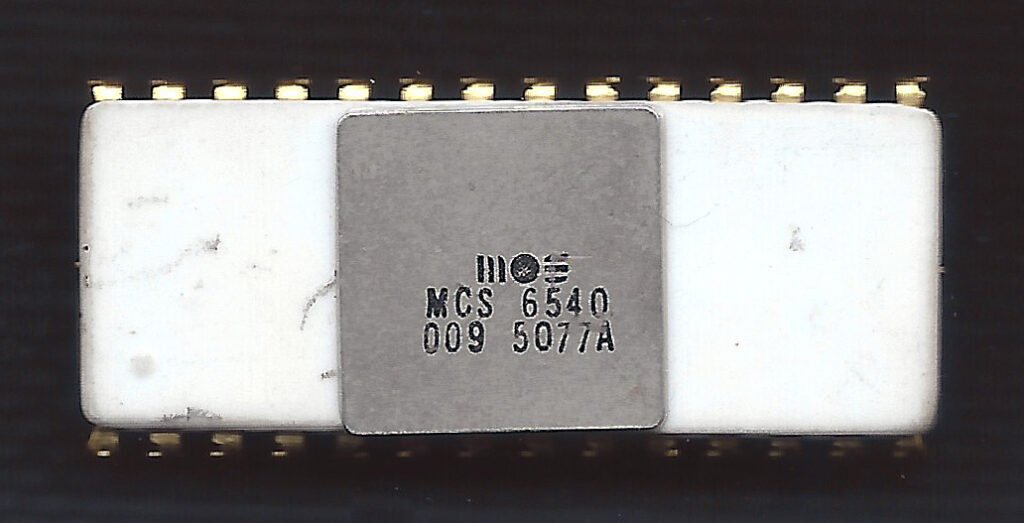
KIM-5 ROM board
The 3 KIM-5 Resident Assembler/Editor ROMs as placed on the KIM-5 ROM board.
Besides the sockets for the ROMs is some glue logic, 2x 74125 buffers, 2x 7485 address decoders, a 7402 TTL IC and some DIP switches.
The KIM-5 ROM board is to be placed in the KIM-4 Motherboard. The manual is not available alas.

KIM-5 on loan from Stefan Hamann.

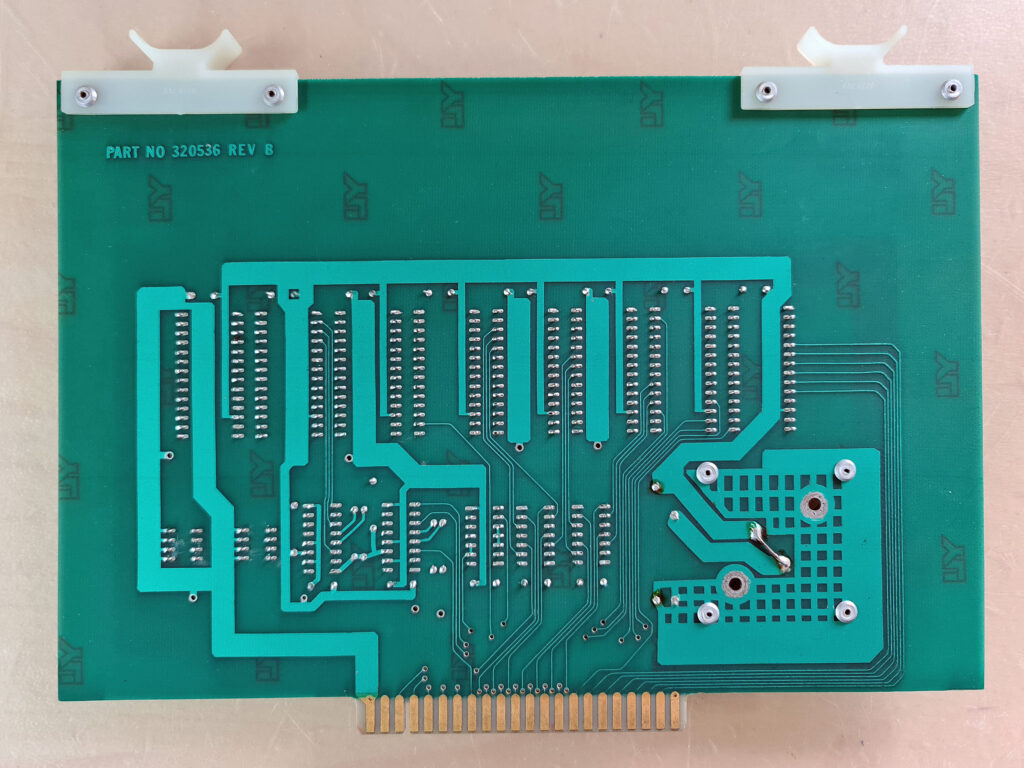
Photos of a KIM-5 board with the Resident Assembler/Editor 6540 ROMs in a KIM-4 motherboard. Photos from the TECMUMAS, dem Technikmuseum (Matthias Schmitt)

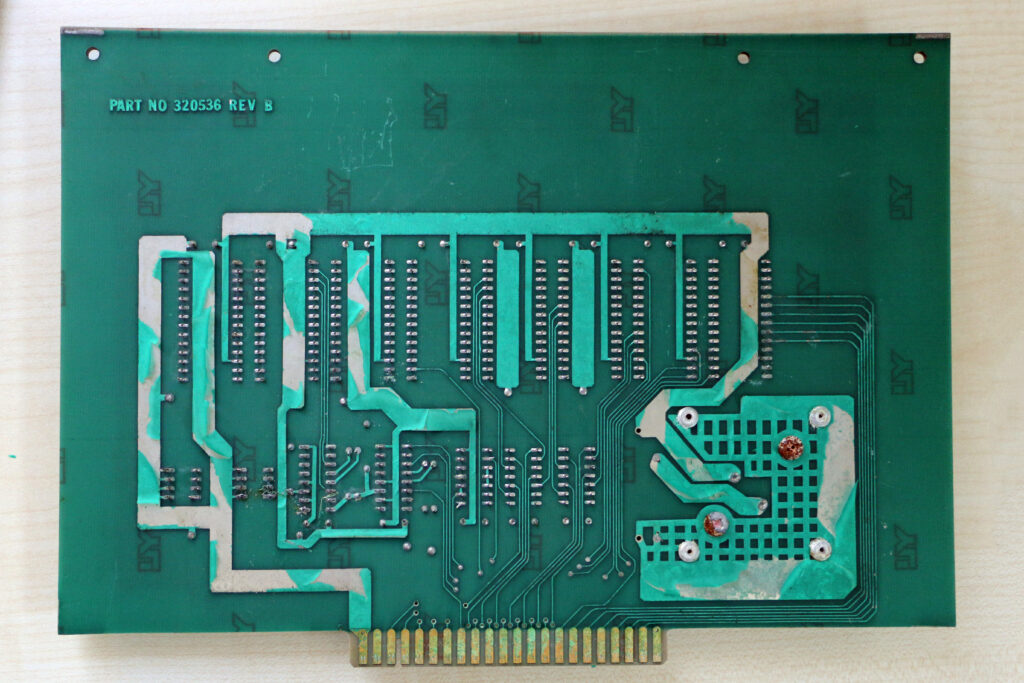
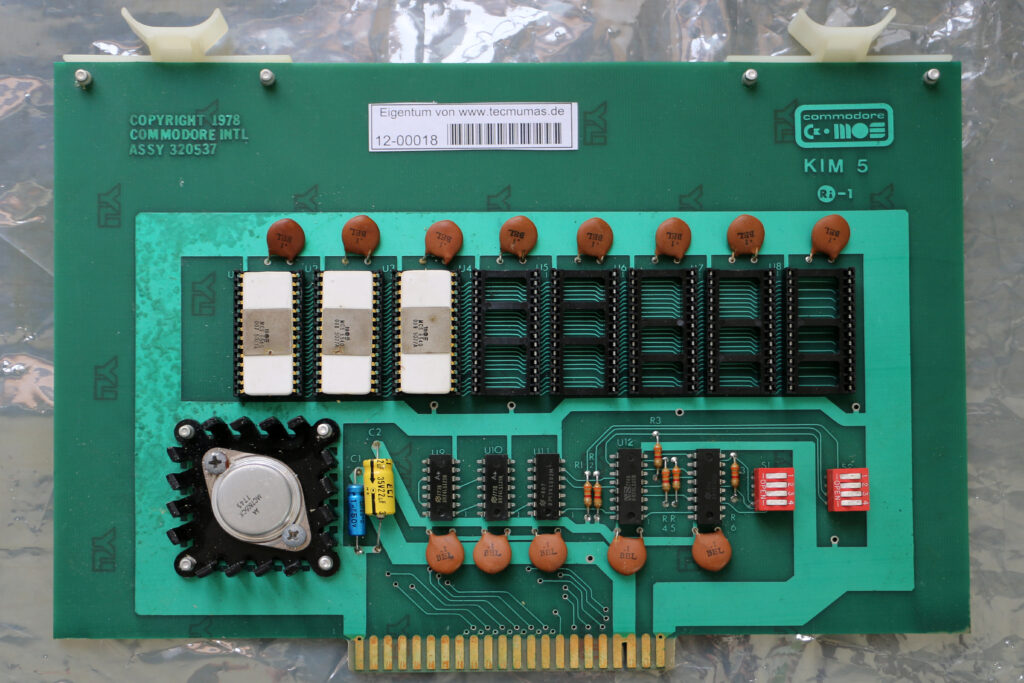
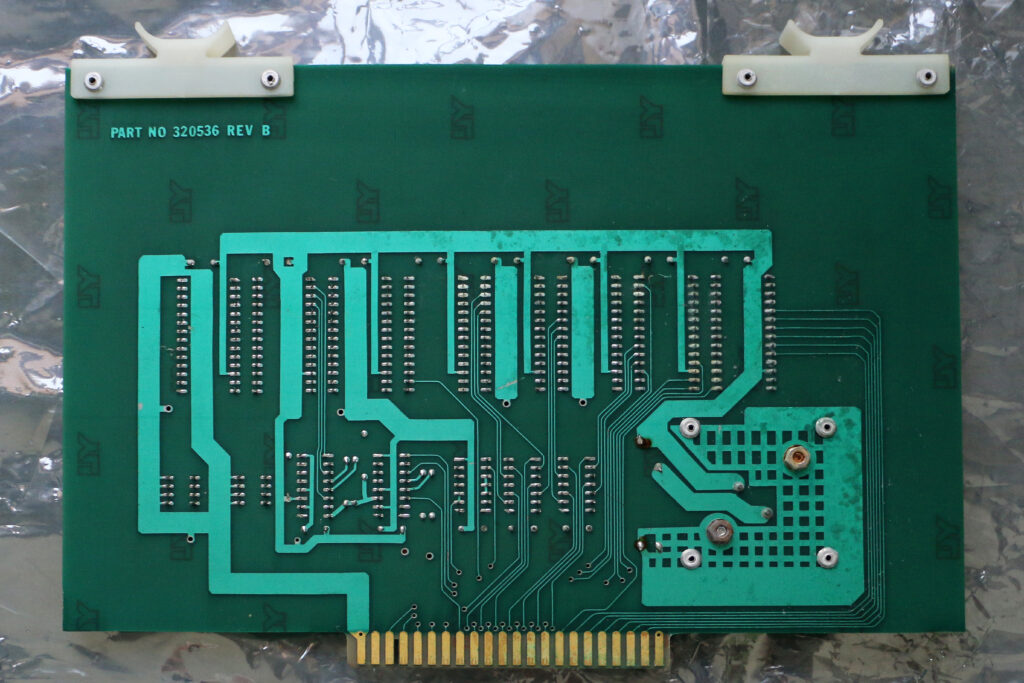
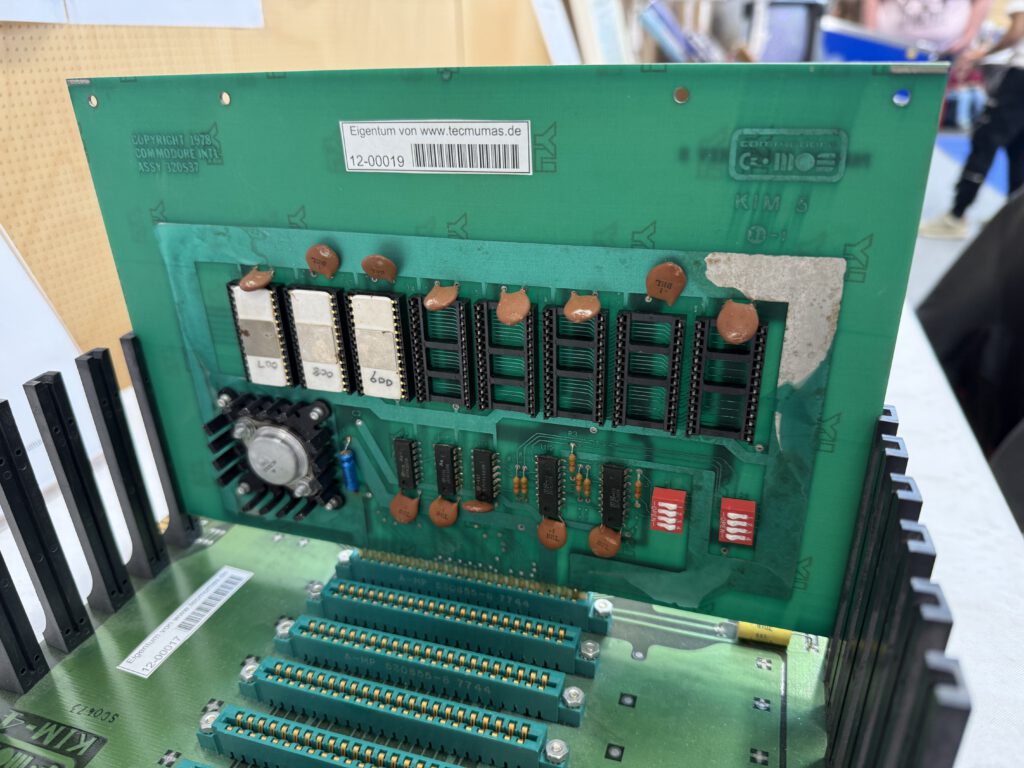
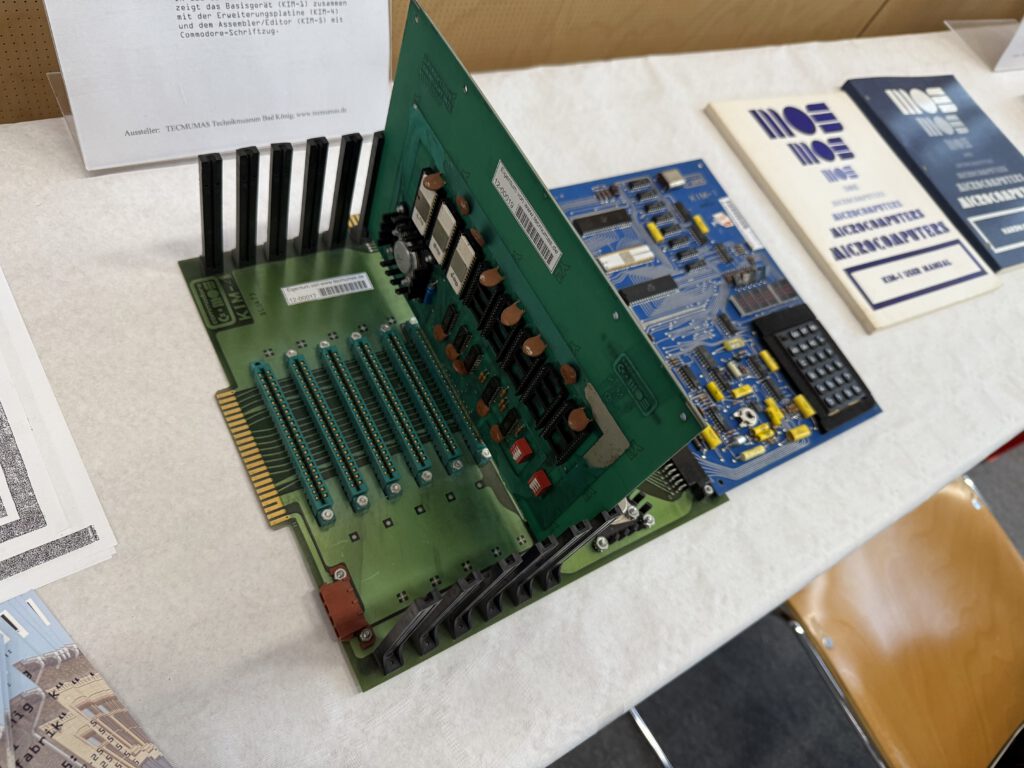


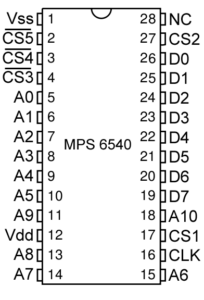











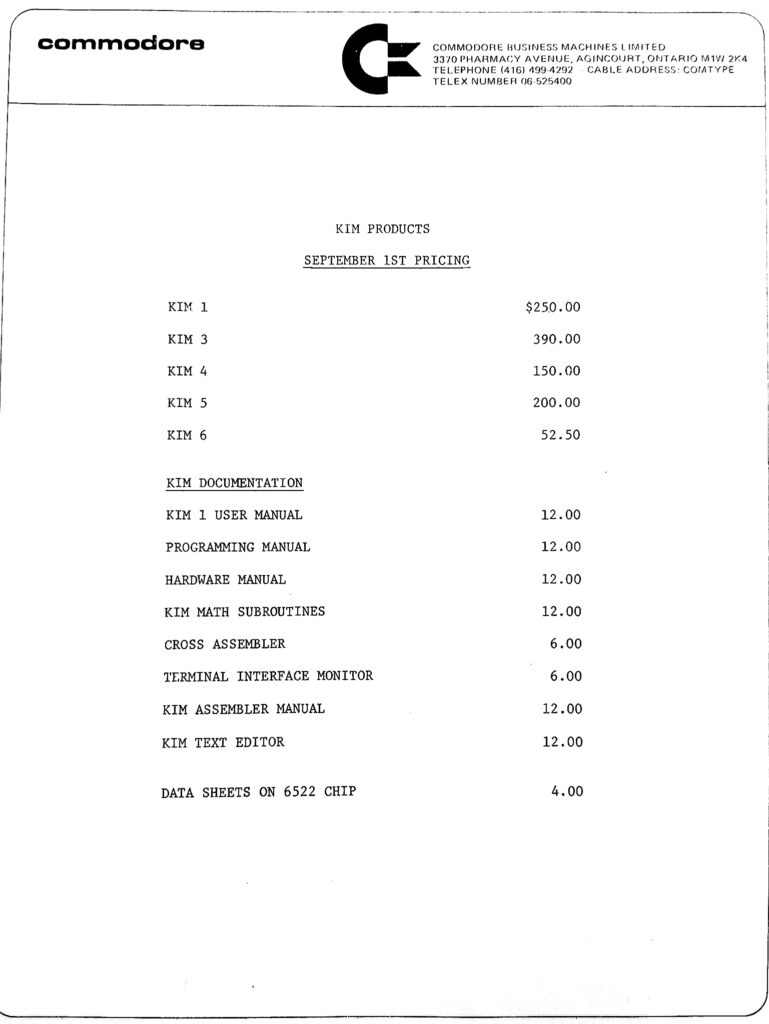
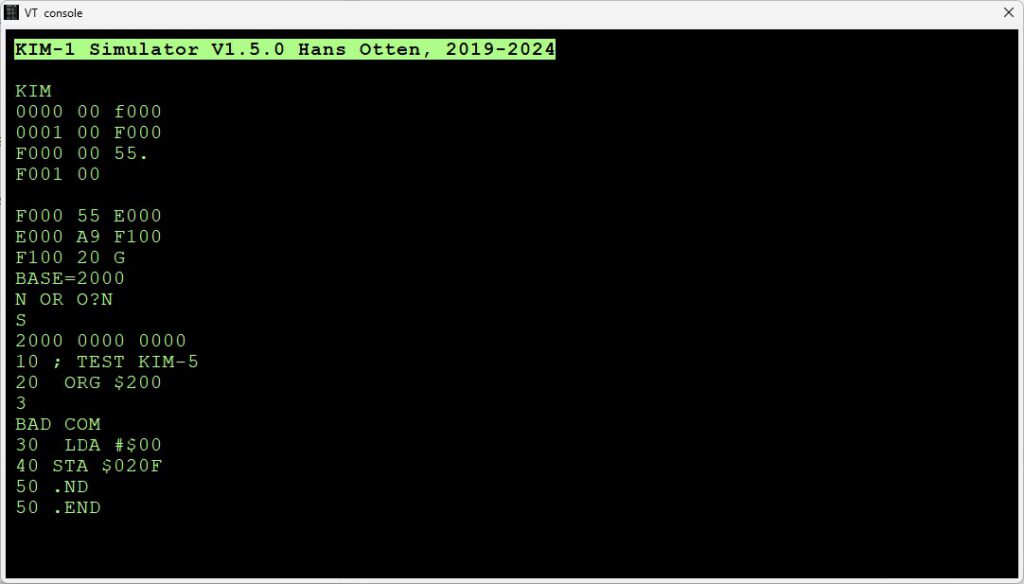

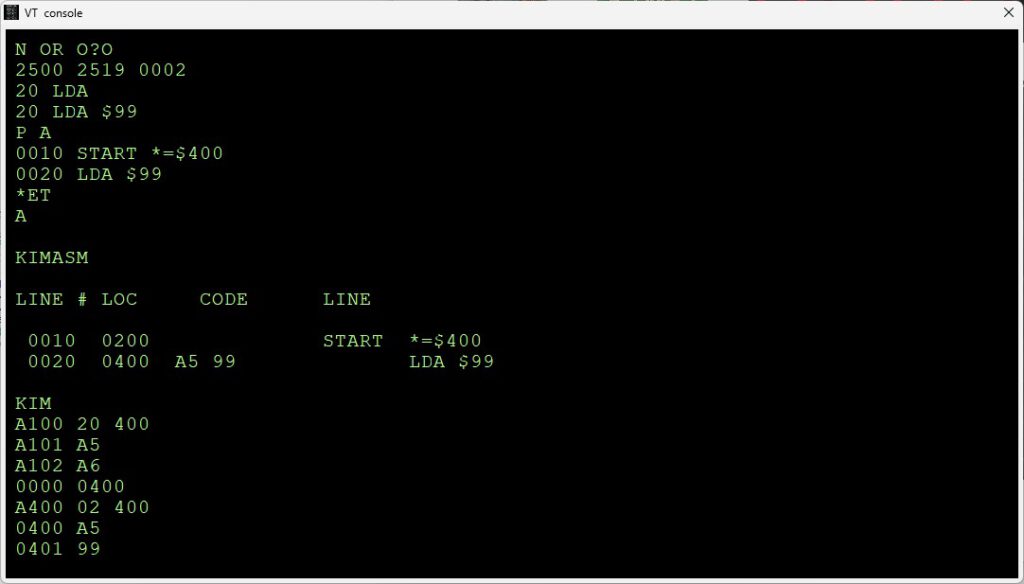

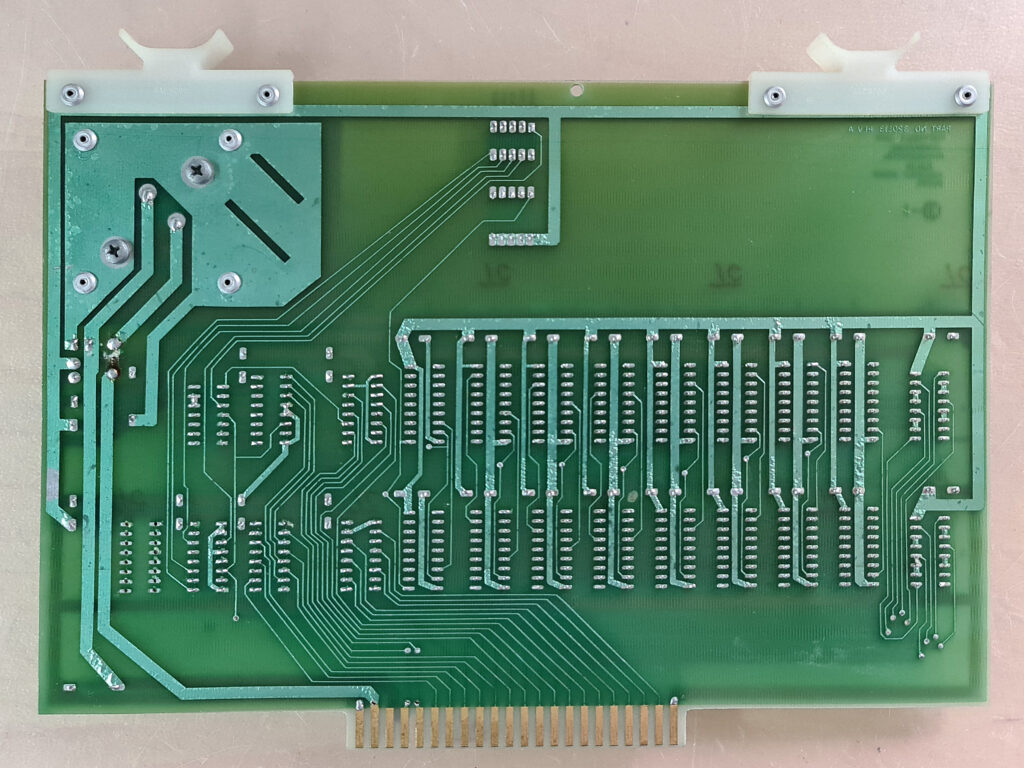
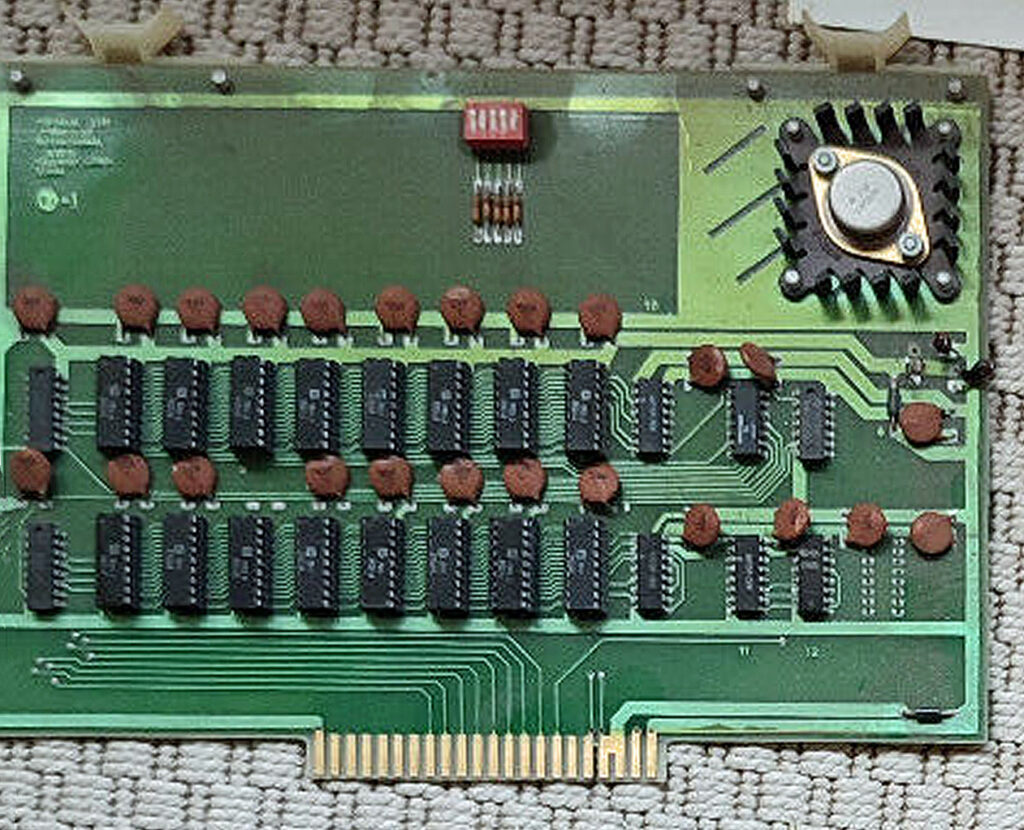
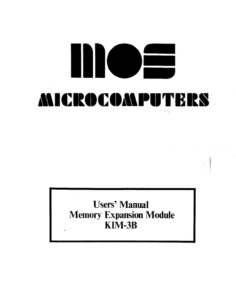
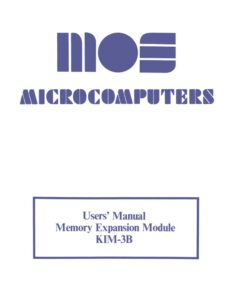
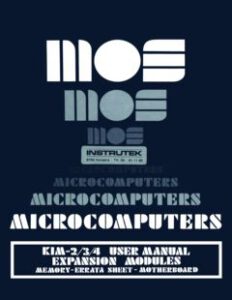 <
<